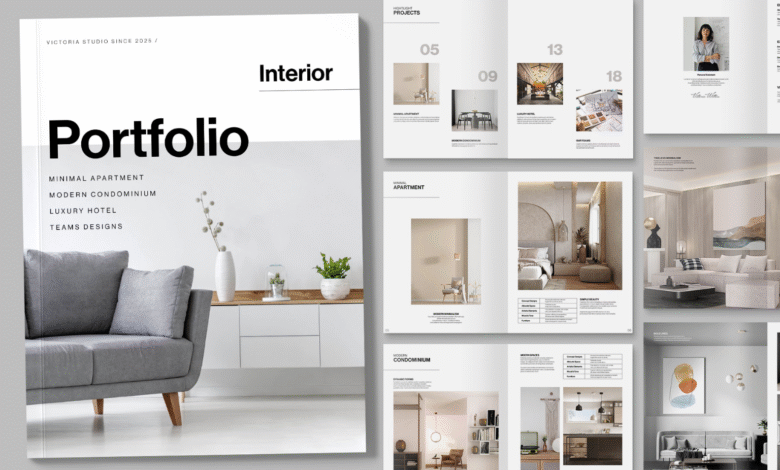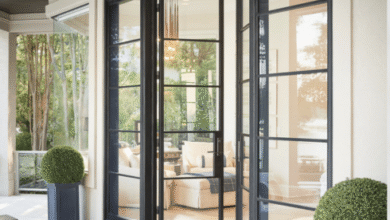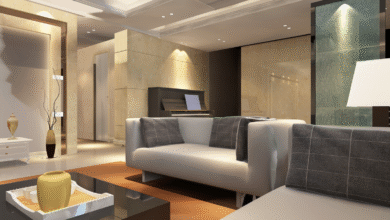Show, Don’t Just Tell: The Heart and Craft of a Standout Interior Design Portfolio

Let’s face it—when it comes to interior design, words only go so far. You can talk all day about your aesthetic, your approach, your love for layered textures and natural light. But nothing lands quite like seeing it. And that’s where the interior design portfolio steps in, quietly but powerfully doing all the heavy lifting.
But here’s the kicker: it’s not just about slapping a few pretty photos on a page. A strong portfolio doesn’t just showcase rooms. It tells stories. It reveals process. It builds trust. It makes someone stop mid-scroll and say, “Yes. This is exactly the vibe I want in my space.”
Why Portfolios Matter More Than Ever
We live in a visual world. With platforms like Instagram and Pinterest feeding us a constant stream of curated design inspiration, expectations are high. Clients aren’t just looking for someone who knows how to place furniture—they want a creative partner who can see beyond trends and translate their personality into space.
And if you’re a designer? Your portfolio is your first impression. Your virtual handshake. Your elevator pitch. Whether you’re applying to firms, pitching a client, or building your brand online, this little collection of visuals can make or break the connection.
A great interior designer portfolio doesn’t scream, “Look at me!” It says, “Here’s what I see—and what I can help you see too.”
More Than Just Pretty Pictures
The truth? A beautiful room doesn’t mean much if we don’t know the “why” behind it. Was the client working with a tight budget? Was the room oddly shaped? Were there unique lighting challenges? A portfolio that tells these stories—briefly, naturally—adds depth and credibility.
Take someone through your thought process. What inspired the palette? Why that layout? What problem were you solving?
Clients love seeing beautiful outcomes. But they trust designers who can explain their choices.
And it’s not about being perfect. Honestly, showing a little realness—like how you had to pivot mid-project or repurpose existing furniture—can be just as impressive. It shows you think on your feet, respect constraints, and care about more than aesthetics.
Building a Portfolio That Feels Like You
There’s no one-size-fits-all here. Your portfolio should reflect your voice, your style, and your values. Are you a maximalist who loves bold color? Lean into that. More into Scandinavian minimalism? Show us how you make neutral feel fresh.
But whatever your look, there’s one rule that always holds: coherence. Your portfolio should feel like a conversation, not a collage. From image choices to layout, keep things intentional. Think clean, professional, and above all—authentic.
And yes, quality matters. Invest in good photography. Grainy phone pics, even of your best work, won’t do it justice. Lighting, angles, and clarity make a huge difference in how your work is perceived. Hire a photographer if you can—or learn to shoot your spaces like one.
Digital, Print, or Both?
Here’s the thing: different clients engage in different ways. A sleek PDF might win you that boutique commercial project, while a tactile, printed booklet could seal the deal with a homeowner who values tangible details.
Online portfolios are non-negotiable these days. Make sure yours is mobile-friendly, easy to navigate, and fast to load. Keep the branding consistent with your business—logos, fonts, tone of voice. And don’t overcomplicate it. Let the work breathe.
Still, don’t underestimate the charm of print. Having something to bring to meetings or leave behind after a consultation adds a personal, professional touch.
What to Include (and What to Leave Out)
You don’t have to show everything. In fact, you probably shouldn’t. Think quality over quantity. Pick 5–10 of your best projects and curate them carefully. For each one, include:
- A short description (what the client wanted, your approach, standout features)
- A few high-quality images (wide shots, detail shots, before/afters if possible)
- Credits, if you collaborated with architects, stylists, or builders
- Optional: a short client testimonial, if you’ve got it
What should you skip? Anything that feels unfinished, irrelevant, or outside your niche. You want potential clients to see your best, not your most recent.
And here’s your naturally placed keyword: A well-curated interior design portfolio, interior designer portfolio isn’t just a gallery—it’s a window into how you think, solve problems, and shape spaces that reflect real lives.
Let the Work Speak—But Give It a Voice
Your visuals do the heavy lifting, sure. But your words? They guide the journey. Write in your natural voice. Don’t over-polish or fall into corporate-speak. A little personality goes a long way. Clients aren’t just hiring your eye—they’re hiring you.
Even a quick caption like, “This tiny kitchen gave me a run for my money—no wall was square, and the client insisted on keeping her 1980s spice rack (which, honestly, kind of grew on me)” says so much. It shows confidence. Humor. Humanity.
Final Thoughts: The Portfolio as Living Document
One last thing: your portfolio should grow with you. It’s not something you build once and forget. Update it regularly. Swap out older projects for new ones that better represent where you’re headed. Treat it like a visual journal of your journey—not just a collection of your greatest hits.
And remember: you don’t need the biggest portfolio. You need the right one. The one that makes a potential client or collaborator say, “This feels like someone I want to work with.”
So go ahead. Pull your favorite projects. Write a few honest lines. Let your work breathe and tell its story.
Because in the end, great design is about more than spaces—it’s about connection. And your portfolio? That’s the first page of that story.




